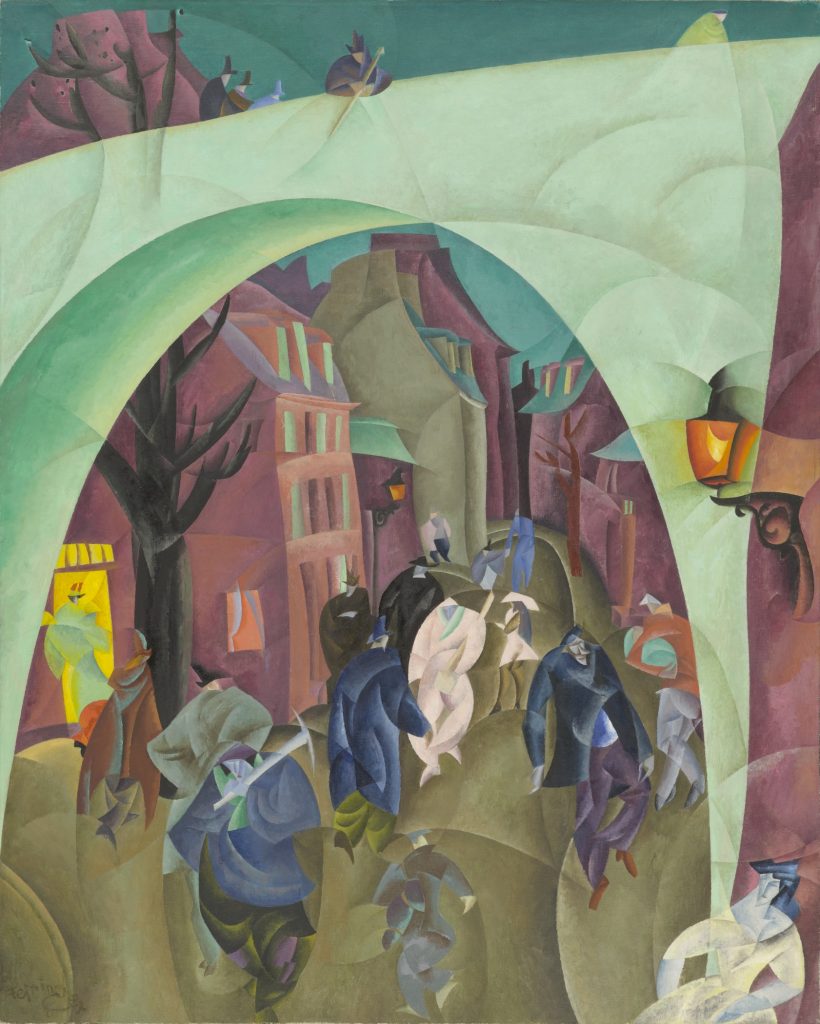The Green Bridge II (work of art)
Información sobre la obra de arte
Key Ideas
- The bright green bridge, abstract human figures, and colorful houses in this painting create a lively scene of a working class neighborhood in Paris. The painting is titled The Green Bridge II because the artist created a black-and-white sketch of the same bridge in 1911.
- Artist Lyonel Feininger was a member of the German expressionist movement, an art movement in the early 1900s in which German artists depicted the reality they felt rather than what they saw.
- The distorted geometric figures and landscape show Feininger’s interest in cubism, an art movement made famous by Pablo Picasso and George Braque. Cubism breaks down an object geometrically, going against traditional approaches to realistic painting. Feininger’s training as a caricature artist is also evident in his depictions of people.
Más información
The scene is Paris: not the fashionable boulevards and cabarets of the “City of Light,” but a working-class neighborhood. It is evening, and the people—solitary travelers cloaked against the chill—move slowly along the gaslit street. The mood is subdued, yet the artist energizes the composition by gently distorting the space, and bending and breaking the parts into planes of color. The height and spectacle of the bridge create a divide between the figures below, on the street, and those looking down from the bridge.
This painting is Feininger’s second version of the same green bridge. He created the first one, a hand-colored etching on paper titled The Green Bridge, in 1911. The etching was displayed at the Salon des Indépendants, an annual art show in Paris in which the most famous artists in the area presented their work. During his time in Paris, Feininger learned and absorbed the lessons of cubism that are evident in this painting.
Feininger was born in the United States to German immigrant parents and moved to Germany at age 16 to study art. He worked as a cartoonist and caricature artist before exploring the world of fine arts. He eventually became a leader in the German expressionist movement and taught art both in Germany and the United States, including in North Carolina!
tags: shape, line, design, place, change, perspective, urban, narrative
Recursos adicionales
Recursos para los profesores:
- Watch a video about Feininger and his unique art style.
- Read an article about life in Berlin during World War I.
- Share an art activity with students that explores the artists associated with Black Mountain College, the art school in North Carolina where Feininger taught.
Recursos para los estudiantes:
- Create a soundscape inspired by The Green Bridge II.
- Watch a video about the history of cubism.
- Explore additional works by this artist.

